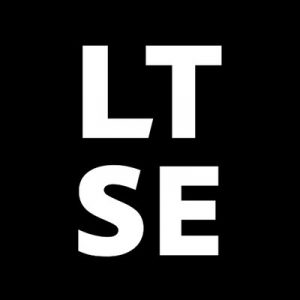
I learned that from Eric Ries in the Power MBA
Career, founded companies & learnings by Eric Ries
Career:
The book The Lean Start Up is now 10 years old and has become compulsory reading for every start-up founder. The author Eric Ries started his career at the start-up There.com as a software engineer. It was there that he discovered his passion for start-ups. Four years later, he and his colleagues founded the start-up IMVU. An instant message service linked to video games. One of the investors was Steve Blank, the founding father of the Lean Start Up movement, so to speak. There, Eric Ries learned a lot about customer feedback and quick small tests to test hypotheses.
The book The Lean Start Up emerged from the experiences of the IMVU period. After several years as a speaker and consultant, Eric Ries founded another start-up – The Long Term Stock Exchange. A national stock exchange that helps companies and investors invest in long-term vision. Eric lives in San Francisco with his wife and two children.
5 Learnings from Eric Ries
 The Story of the Long Term Stock Exchange
The Story of the Long Term Stock Exchange
Eric Ries already complains in his book “The Lean Starup” about the short-term motivation of many start-ups. 2-5 years to make the thing big and then go for an exit. This way of thinking cannot create great visions and long-term changes.
That is why he founded the Long Term Stock Exchange (LTSE) in 2015. A national stock exchange that brings together companies and investors who want to work and invest together on long-term visions. In 2019, the LTSE was approved as a national stock exchange by the Securities and Exchange Commission.
The guidelines for being listed as a company on this exchange include the following points:
- Long-term focused companies should consider a broader group of stakeholders and the critical role they play in each other’s success.
- Companies with a long-term focus should measure their success in years and decades and prioritize long-term decisions.
- Companies with a long-term focus should adjust executive and board member compensation to reflect long-term performance.
- Boards of directors of long-term companies should deal with long-term strategies and monitor them explicitly.
- Long-term focused companies should get in touch with their long-term shareholders.
It has been possible to invest in listings on the stock exchange since September 2020. Companies can also be listed on the LTSE and other US stock exchanges. Well-known start-ups and companies that are listed on the LTSE belong Strava, MIXT, molekuleair.
Here`s what you can learn from Eric Ries in the Power MBA:

Eric Ries is one of many world-class lecturers in the 11-month Power MBA continuing education program. The company has made it its business to democratize MBA courses and make them accessible to everyone. Instead of paying thousands of euros for an MBA, the Power MBA costs only € 1000. There are 15 minute lessons every day with the best lecturers from today’s entrepreneurial world. Including Eric Ries. Its modules deal with these topics:
- Lean Startup Principles
- Compete vs inovate
- Road to disaster
- Lean startup using the example of Zappos
- Types of MVPs
- MVPS keys and barriers
Start Your PMBA*
The life story of Eric Ries

Eric Ries was born in 1978. He studied computer science at Yale University. One of his lecturers was Steve Blank, who is also seen as the forefather of the Lean Start Up movement. He was a huge influence on The Lean Start Up book.
After graduating in 2001, he went to Silicon Valley and started at There.com as a software engineer. The company was working on a virtual 3D based product, but soon failed.
Then Eric joined the start-up IMVU as a co-founder. The company’s goal was to create an instant messaging service in video games. His old lecturer Steve Blank was also invested in this company. He asked all IMVU executives to complete his entrepreneurship course. It was there that Eric Blanks got to know the method of quick customer feedback. This method should lay the foundation for the book Lean Start Up.
With the help of quick small tests, they managed to learn very quickly and to continuously optimize the product. Within 6 months they created an MVP. They then raised $ 19 million in two financing rounds.
In 2008 Eric stepped down as CTO but remained with the company as a consultant. Six months later he started his next job as a risk advisor at Kleiner Perkins. During this time he started advising start-ups. Through his experience from his previous jobs, his training and consulting work, he developed the Lean Start Up approach. He shared the learnings and the system on his blog. Until he finally published the book The Lean Start Up in 2010/11.
He was then regularly invited as a speaker and lecturer and received a position as entrepreneur-in-residence at Harvard Business School. During this time he advised young and old companies on how to use the Lean Start Up approach.
He published two more books over the next few years. The Leaders Guide and The Start Up Way. Since 2015 he has mostly been involved with his company on the Long Term Stock Exchange. A national stock exchange that brings together companies and investors who want to invest in visions for the long term. Since the end of 2020 it has been possible to invest in companies on this exchange.
 The Story of the Long Term Stock Exchange
The Story of the Long Term Stock Exchange